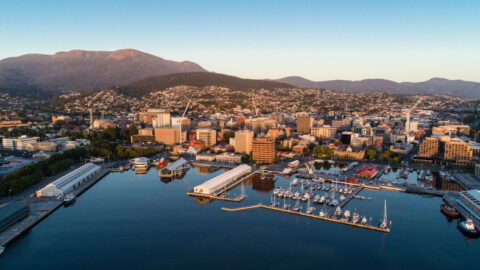The CEFC is investing $750,000 in Hysata, a new company created to commercialise innovative electrolyser production technology, which has the potential to boost hydrogen production.
Global investor IP Group is also investing in Hysata, bringing the company’s financial support to accelerate its development to $5 million.
The investment is the first hydrogen-related commitment by the CEFC, made on behalf of the Federal Government through its specialist Clean Energy Innovation Fund.
The Hysata technology was developed by a team of researchers at the University of Wollongong led by chemical catalysis and characterisation expert Professor Gerry Swiegers.
Clean Energy Innovation Fund Executive Director, Ben Gust, said, “Hysata’s advanced electrolyser technology has the potential to significantly improve the efficiency of hydrogen production, an important step in making it a more economic source of clean energy.
“Hydrogen offers significant emissions abatement opportunities across the economy, both here in Australia and globally. We are proud to be investing $750,000 in the early commercial development of this exciting Australian university research.
“Australian researchers are known for their innovative solutions to big challenges.
“Bringing down the cost of hydrogen production will accelerate the development of this exciting industry, similar to the pathway we have seen with large-scale solar, where Australia is now a world leader.”
Paul Barrett, Head of Physical Sciences at IP Group Australia and Hysata Interim CEO, said, “Hysata represents a once in a lifetime opportunity to reshape an industry.
“I’m delighted to be working with Professor Swiegers and the team at the University of Wollongong to bring this technology to market.
“This will have an impact both economically and environmentally on our path to net zero.”
Michael Molinari, IP Group Australia Managing Director, said, “We have been looking globally for new technology that can unlock the trillion-dollar opportunity in hydrogen.
“The Hysata technology is truly world-leading, and we’re very excited to help the team in their mission to make green hydrogen a reality for Australia and the world.
“This company is a great example of the tremendous economic opportunities that can be unlocked by the research being done at our universities.”
Professor Swiegers has founded six spin-off companies and licensed out three new technologies in the past 15 years.
His extensive work in bridging the academia-to-industry gap and commercialisation of research has attracted an estimated $100 million in private investment and numerous awards, including two DuPont Innovation awards for taking ideas to market.
Hysata is based at the University of Wollongong Australian Institute for Innovative Materials, a purpose-built facility created to help transform multi-functional materials research into commercial reality.
Hysata has strong laboratory, academic and commercialisation experience and is actively investigating potential applications for its breakthrough technology.
A global race is on to provide affordable, safe and efficient hydrogen energy with the ability to increase scale rapidly – a growing number of countries, including Australia, have national hydrogen strategies.
Clean hydrogen, produced using renewable energy rather than fossil fuels, has the potential to significantly reduce emissions in several hard-to-abate industries.
These include methanol, fertiliser and chemicals production, steel manufacturing, industrial heating and long-haul freight transport.
Producing clean hydrogen under $2/kg is a stretch target outlined in the Federal Government’s Low Emissions Technology Statement 2020.
Achieving the target will require a significant reduction in existing production costs, which are relatively energy intensive.
The CEFC commissioned report Australian Hydrogen Market Study, by global energy consultants Advisian, identifies which sectors are close to being hydrogen competitive, and outlines the challenges and economic potential of hydrogen.
The report said that electrolyser capital costs and efficiency were key factors in accelerating a hydrogen industry in Australia, pointing to the need for a technical evolution that improved electrolyser efficiency, resulting in lower operating costs, to reduce the farm gate cost for green hydrogen prior to 2050.
CEFC CEO, Ian Learmonth, said, “The versatility of hydrogen means it can be used in a wide range of processes, making it an ideal energy carrier as Australia transitions to a low carbon economy.
“Advances in hydrogen technology offer a credible pathway to cutting emissions from high intensity sectors, which might otherwise lack large, scalable energy options.
“The CEFC has a strong focus on hydrogen-related investments, and we are actively pursuing large-scale investment opportunities through our new $300 million Advancing Hydrogen Fund.
“As expected, these large-scale investments can take time to develop, and we are looking forward to reaching financial close on our first large-scale transaction.
“In the meantime, we are delighted to have been able to use the experience and start-up investment focus of our specialist Innovation Fund to make this investment in Hysata.”
The Clean Energy Innovation Fund is the largest dedicated cleantech investor in Australia, created to invest $200 million in early-stage clean technology companies.
The Innovation Fund targets technologies and businesses that have passed beyond the research and development stage, such as Hysata, and which can benefit from early stage seed or growth capital to help them progress to the next stage of their development.
















